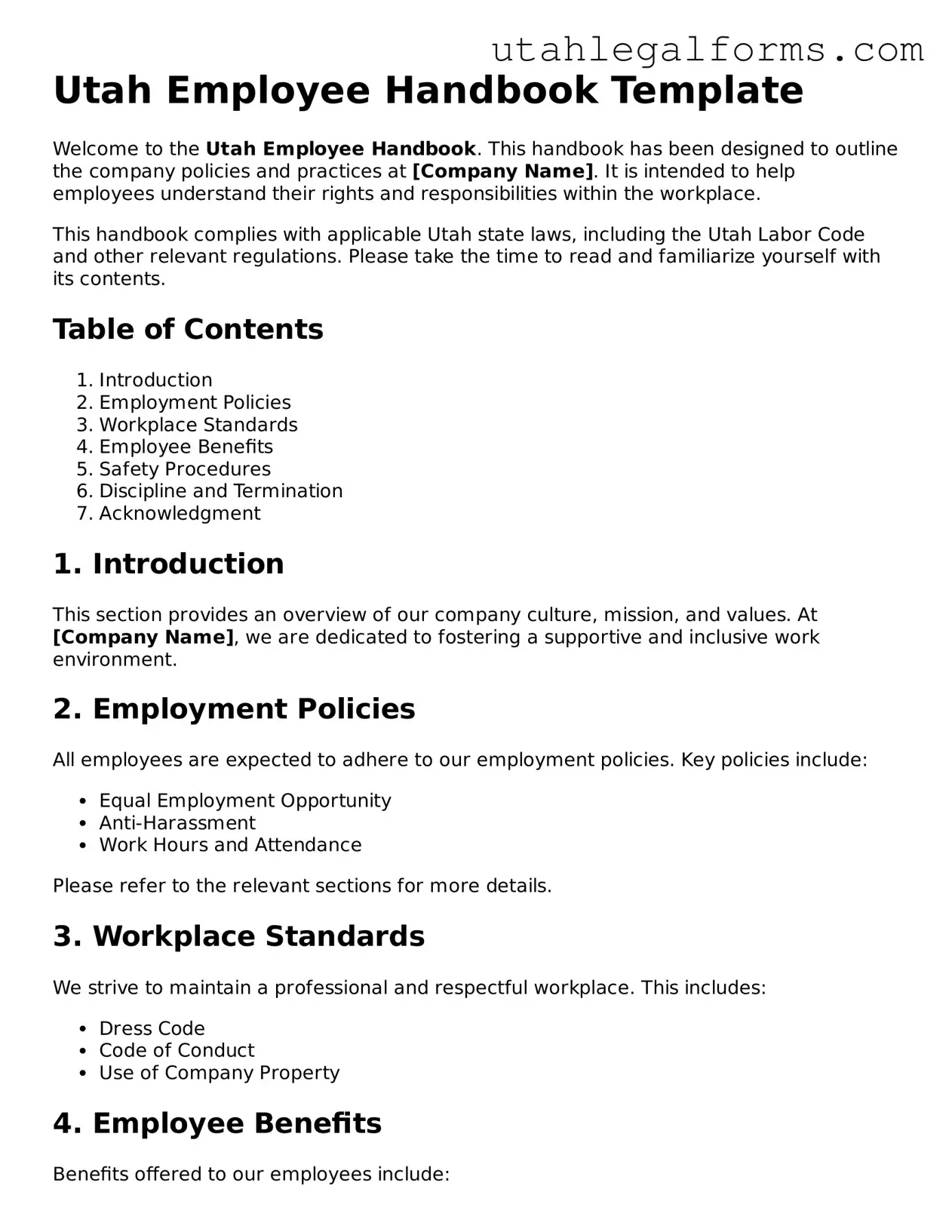Official Employee Handbook Form for Utah State
The Utah Employee Handbook form serves as a vital document that outlines workplace policies, employee rights, and company expectations. This form is essential for both employers and employees to ensure clarity and compliance with state regulations. Ready to get started? Fill out the form by clicking the button below.
Access Employee Handbook Now
